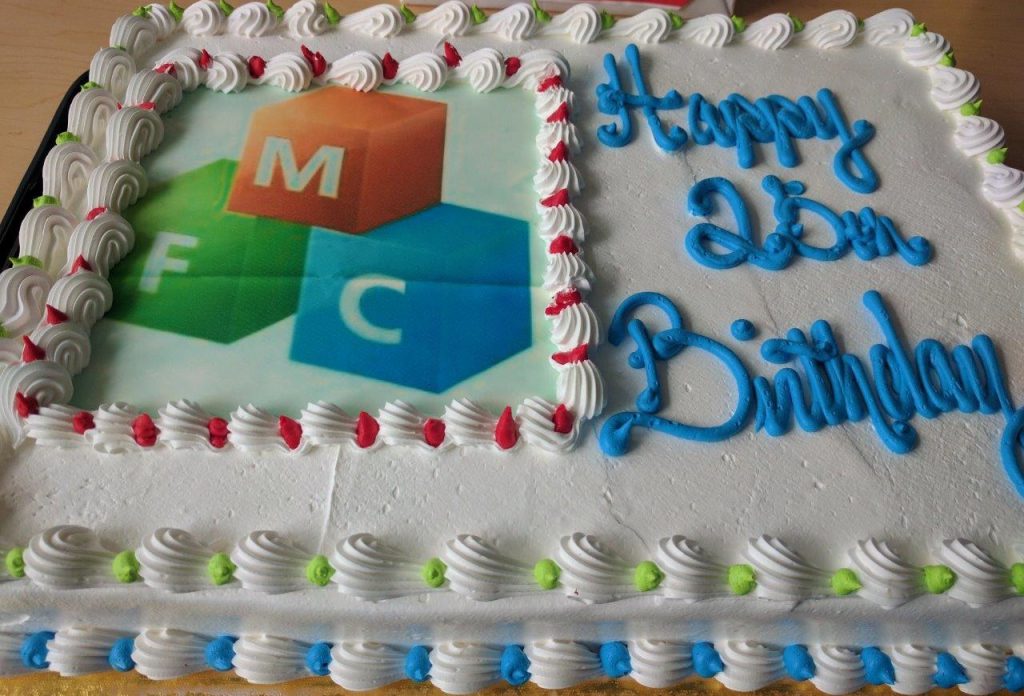February 26th marks the 25th anniversary for the Microsoft Foundation Classes (MFC). Join us in wishing MFC a big Happy Birthday!

MFC saw the light of day on February 26th 1992 and it has been a very large part of the Microsoft C++ legacy ever since. While Visual C++ 1.0 would only ship one year later (with MFC 2.0), in 1992 MFC 1.0 was laying the foundation as part of the Microsoft C/C++ 7.0 product. Here’s a snippet of that announcement that we dusted off from the Microsoft archives:
SANTA CLARA, Calif. — Feb.26, 1992 Microsoft Debuts C/C++ 7.0 Development System for Windows 3.1 High-Performance Object Technology Produces Smallest, Fastest Code for Windows 3.0, 3.1 Applications
“Microsoft C/C++ has been crafted with one goal in mind — to help developers build the best C/C++ applications possible for Microsoft Windows,” said Bill Gates, Microsoft chairman and CEO. “The combination of a great C++ compiler and the Microsoft Foundation Class framework gives programmers the benefits of object orientation for Windows with the production code quality they expect from Microsoft.”
[…] C/C++ 7.0 provides a number of new object-oriented technologies for building Windows-based applications:
[…] Microsoft Foundation Classes provide objects for Windows, with more than 60 C++ classes that abstract the functionality of the Windows Application Programming Interface (API). The entire Windows API is supported. There are classes for the Windows graphics system, GDI; Object Linking and Embedding (OLE) and menus. The framework allows easy migration from the procedural programming methodology of C and the Windows API to the object-oriented approach of C++. Developers can add object-oriented code while retaining the ability to call any Windows API function directly at any time; a programmer can take any existing C application for Windows and add new functionality without having to rewrite the application from scratch.
In addition, the foundation classes simplify Windows message processing and other details the programmers must otherwise implement manually. The foundation classes include extensive diagnostics. They have undergone rigorous tuning and optimization to yield very fast execution speeds and minimal memory requirements.
[…] C++ source code is included for all foundation classes. More than 20,000 lines of sample code are provided in 18 significant Windows-based applications to demonstrate every aspect of the foundation classes and programming for Windows, including use of OLE.
Win32 APIs have been evolving with Windows, release after release. Through the years, MFC has stayed true to the principles outlined above by Bill Gates: to provide a production-quality object-oriented way of doing Windows programming in C++. When Win32 development slowed down in recent years and made room for more modern UI frameworks, so did MFC development. Nevertheless, we’re thrilled to see so many developers being productive with MFC today.
The Microsoft C++ team is very proud of the MFC legacy and fully committed to have your MFC apps, old or new, continue to rock on any Windows desktop and in the Windows Store through the Desktop Bridge. Thank you to all of you that have shared with us ideas, bug reports and code over the years. A special thanks to all the Microsoft and BCGSoft team members, present or past, that through the years have contributed to the MFC library, Resource Editor, MFC Class Wizard and other MFC-related features in Visual Studio. It’s been a great journey and we look forward to our next MFC adventures!
That’s our story, what’s yours? To share your story about MFC and/or Visual C++, find us on twitter at @visualc and don’t forget to use hashtag #MyVSStory
![]()
The Microsoft C++ Team


May I know why all comments were removed from here?